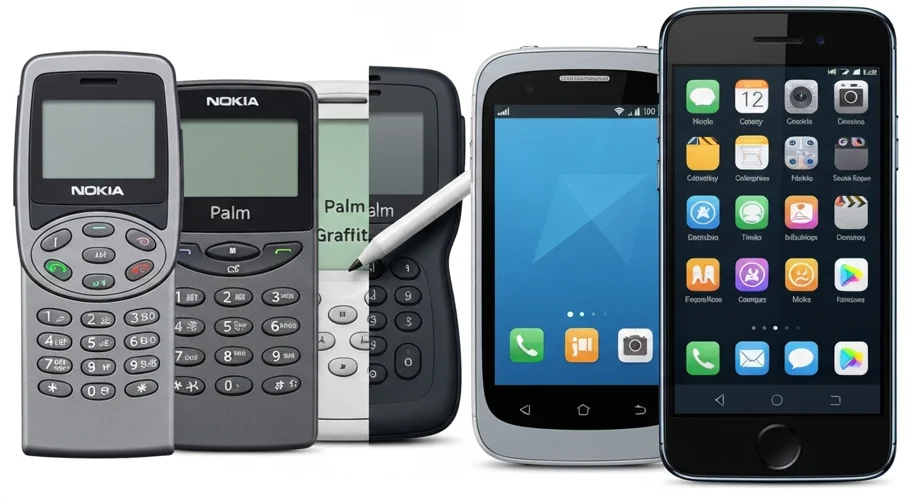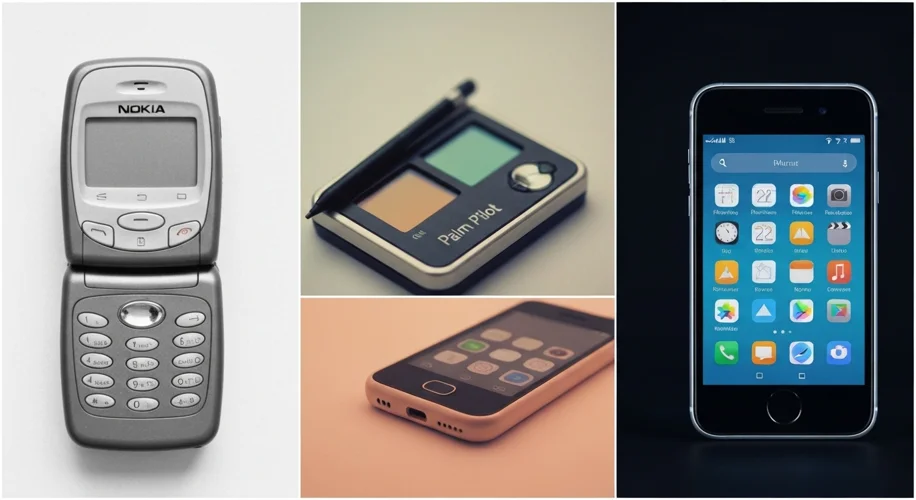In the blink of an eye, our pocket-sized companions have transformed from simple communication tools into sophisticated extensions of our very beings. But this seamless interaction with the digital world didn’t appear overnight. It’s a story of relentless innovation, competing visions, and a constant dance between hardware and software, all culminating in the mobile operating systems and user interfaces we know today.
Imagine a world before the glass slab. The year is 1992. Nokia, a name synonymous with durable phones, launches the Nokia 1011. This wasn’t just another phone; it was a harbinger of a new era, a digital step forward. Its interface? A symphony of physical buttons and a monochrome LCD screen. Navigating its features meant clunky menu scrolling, a far cry from the fluid gestures of today. Yet, for its time, it was revolutionary, enabling SMS messaging and basic phone functions with an ease previously unimaginable.
As the 90s gave way to the new millennium, the seeds of a graphical revolution were sown. Early attempts at giving mobile devices more intuitive interfaces emerged. Palm OS, for instance, introduced a stylus-based input system and the Graffiti handwriting recognition, a unique approach that, while powerful for its time, demanded a learning curve. These systems, running on devices like the Palm Pilot, were more than just phones; they were personal digital assistants, or PDAs, hinting at the multi-functional devices to come.

The true seismic shift, however, arrived in 2007 with the unveiling of the Apple iPhone. Steve Jobs, standing on a stage, declared, “Today, Apple is going to reinvent the phone.” And reinvent it, they did. The iPhone’s capacitive touchscreen, responding to the gentle touch of a finger rather than the pressure of a stylus, was a revelation. Its multitouch interface, allowing for pinch-to-zoom and fluid scrolling, felt like magic. iOS, Apple’s proprietary operating system, was designed with simplicity and elegance at its core. Gone were the days of complex button combinations; the app icon grid, a universe of possibilities at your fingertips, became the new standard.
But the stage wasn’t solely for Apple. Google, already a titan of the internet, entered the fray with Android in 2008. Initially conceived with a physical keyboard in mind, the platform quickly adapted to the touchscreen revolution. Android’s open-source nature fostered a diverse ecosystem, leading to a wide array of devices from various manufacturers. Its interface, while offering more customization than iOS, presented a different philosophy – choice and flexibility.
Early Android devices, like the HTC Dream (T-Mobile G1), showcased a unique blend of physical and touch interfaces, often featuring a slide-out keyboard. The user experience was more fragmented than iOS, with different manufacturers applying their own skins and features on top of the core Android OS. This led to a vibrant, albeit sometimes confusing, landscape of mobile interaction. Think of the early days of widgets, customizable home screens, and the notification shade – features that emphasized user control and personalization.
The competition between iOS and Android ignited an unprecedented pace of innovation. We saw the refinement of touch gestures, the introduction of voice assistants like Siri and Google Assistant, and the integration of advanced sensors that allowed devices to understand their environment. The user interface evolved from simple grids of icons to dynamic, context-aware displays that anticipated our needs. The flip phone’s flicker gave way to the sleek, all-screen smartphone, a testament to the power of software design dictating hardware evolution.
Looking back, the journey from a simple numeric keypad to the sophisticated, touch-driven interfaces of today is a captivating narrative of human ingenuity. It’s a story of how operating systems, once hidden beneath layers of hardware, became the very soul of our mobile devices, shaping not just how we communicate, but how we live, work, and connect in the modern world.

